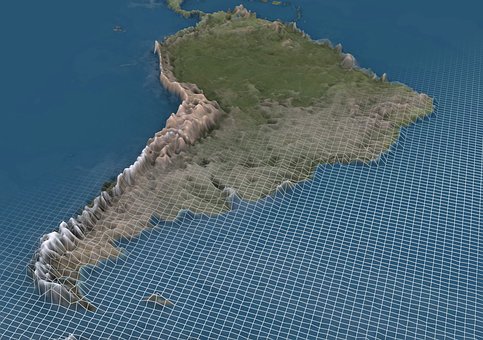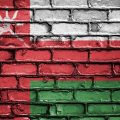DE FAAKTO OUTBREAK INTELLIGENCE
31 January 2019
OUTBREAK INTELLIGENCE YELLOW FEVER-AMERICAS
The World Health Organization & The Pan American Health Organization have issued a Yellow Fever Situation Report for Yellow Fever in the Americas
- January 2017 – December 2018, six countries and territories in the Region of the
Americas reported confirmed cases of yellow fever - Bolivia, Brazil, Colombia, Ecuador, French Guiana, and Peru
- The number of cases reported during this period in the Region of the Americas exceeded the number reported in several decades
Available Data for Epidemiological Situation in Brazil & Peru
Brazil
- The highest transmission (seasonal period) occurs between December and May
- 2016-2017 seasonal period
- 778 human cases
- 262 deaths
- 2017-2018 seasonal period
- 1,376 human cases
- 483 deaths
- 2018-2019
- 12 confirmed human cases
- 6 deaths
Peru
- 2018
- 20 cases of yellow fever reported
6 deaths
- 2017
- 6 cases of yellow fever were reported
De Faakto Risk Assessment
De Faakto intelligence research has noted a recent up trend in Yellow Fever outbreaks and advises travelers at risk for contracting Yellow Fever follow the U.S. Center for Disease Control recommendations issued for Nigeria.
U.S. Center for Disease Control-Recommendations
- Travelers going to Nigeria should receive vaccination against yellow fever at least 10 days before travel and should take steps to prevent mosquito bites while there
- Those never vaccinated against yellow fever should avoid travel to Nigeria during the outbreak
Vaccination
- Vaccination is the most important means of preventing yellow fever
- The yellow fever vaccine is safe, affordable and a single dose provides life-long protection against yellow fever disease
- A booster dose of yellow fever vaccine is not needed
- 17D yellow fever vaccine
- YF-Vax (Sanofi Pasteur)
2018 Outbreaks
- Nigeria
- Netherlands
- Republic of Congo
- French Guiana
- Brazil
- Global immunization experts have warned against stagnation of Yellow Fever vaccinations in Africa
- Immunization programs have been rolled out in Senegal, Ethiopia, Nigeria, Ghana
WHO Risk Assessment
- Yellow Fever is transmitted by infected mosquitoes and has the potential to spread rapidly and cause serious public health impact
- There is currently a moderate risk at regional level due to the possible movement of the individuals of affected states to adjacent areas and neighbouring countries and particularly if there is arrival of unvaccinated visitors over the festive end of year season. The current overall risk is low at the global level
- There is no specific treatment, although the disease is preventable using a single dose of yellow fever vaccine, which provides immunity for life. Supportive care to treat dehydration, respiratory failure and fever and antibiotic treatment for associated bacterial infections is recommended
About Yellow Fever
- Yellow fever is an acute viral haemorrhagic disease transmitted by infected mosquitoes. The “yellow” in the name refers to the jaundice that affects some patients
Symptoms of Yellow Fever
- fever, headache, jaundice, muscle pain, nausea, vomiting and fatigue
- A small proportion of patients who contract the virus develop severe symptoms and approximately half of those die within 7 to 10 days
Where does Yellow Fever Occur?
- The virus is endemic in tropical areas of Africa and Central and South America
How is Yellow Fever Controlled?
- Vaccinations
- Vector control
- Epidemic Preparations
How Yellow Fever Symptoms Progress
- Once contracted, the yellow fever virus incubates in the body for 3 to 6 days. Many people do not experience symptoms, but when these do occur, the most common are fever, muscle pain with prominent backache, headache, loss of appetite, and nausea or vomiting. In most cases, symptoms disappear after 3 to 4 days
- A small percentage of patients, however, enter a second, more toxic phase within 24 hours of recovering from initial symptoms. High fever returns and several body systems are affected, usually the liver and the kidneys. In this phase people are likely to develop jaundice (yellowing of the skin and eyes, hence the name ‘yellow fever’), dark urine and abdominal pain with vomiting. Bleeding can occur from the mouth, nose, eyes or stomach. Half of the patients who enter the toxic phase die within 7 – 10 days
Treatment
- Good and early supportive treatment in hospitals improves survival rates. There is currently no specific anti-viral drug for yellow fever but specific care to treat dehydration, liver and kidney failure, and fever improves outcomes. Associated bacterial infections can be treated with antibiotics
WHO Website Resources
https://www.who.int/en/news-room/fact-sheets/detail/yellow-fever
https://www.who.int/csr/don/archive/disease/yellow_fever/en/
http://CDC https://wwwnc.cdc.gov/travel/notices/watch/yellow-fever-nigeria






